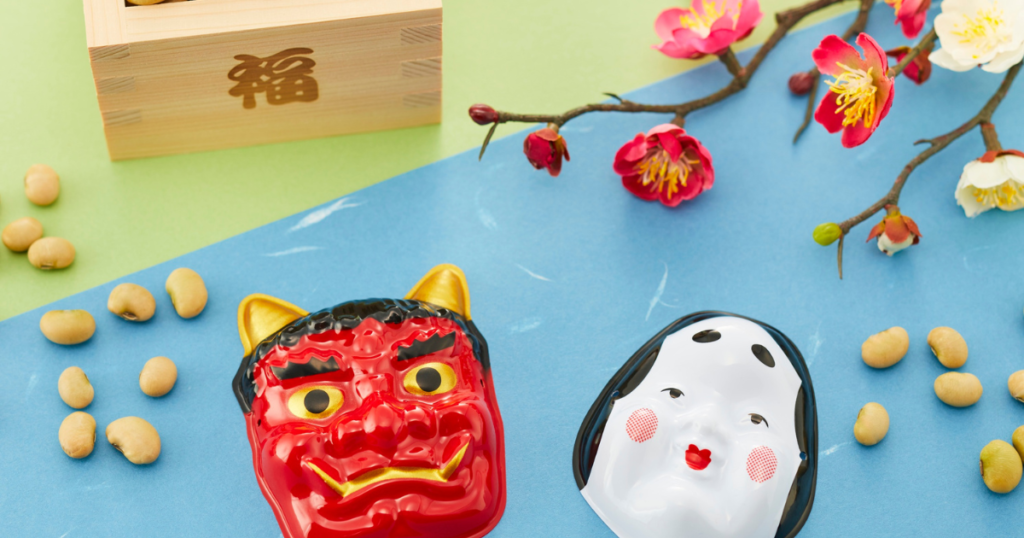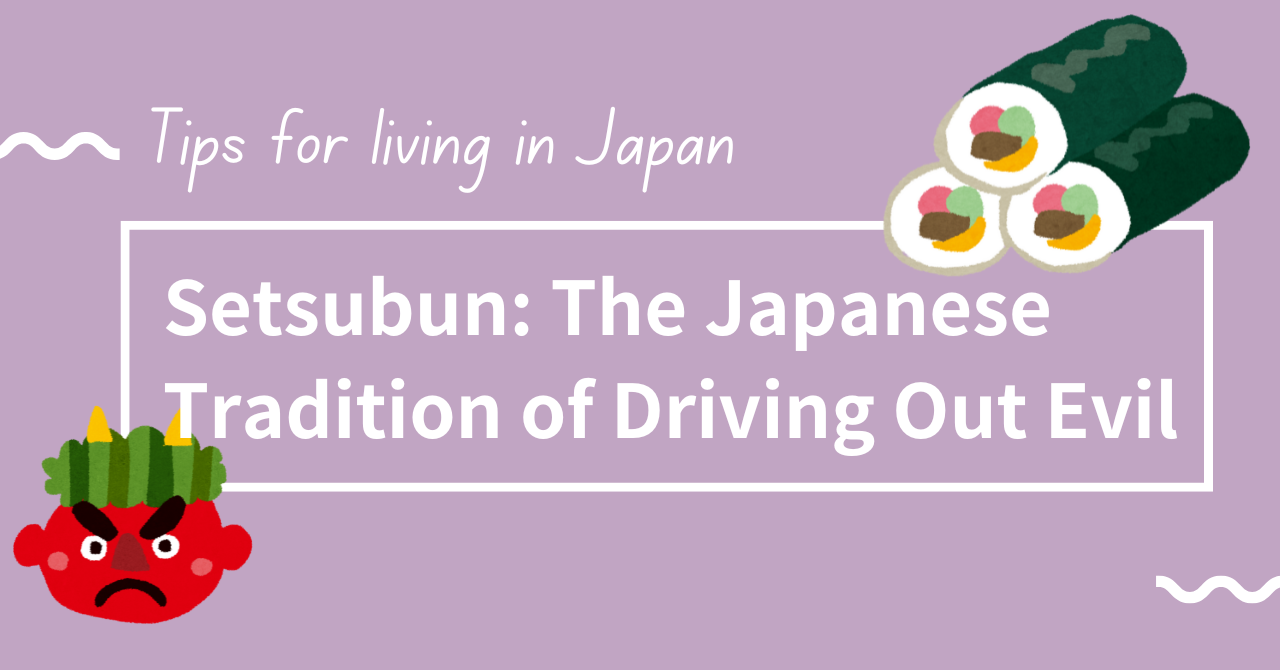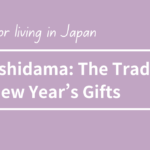In Japan, every season is marked by a unique tradition, and one of the most colorful and exciting customs is Setsubun (節分). Celebrated on February 3rd (or the day before the beginning of the new spring in the traditional lunar calendar), Setsubun is a festival centered around driving out evil spirits and welcoming the new season with joy and positivity. This ancient custom blends elements of folklore, purification rituals, and lively celebrations, making it a fascinating part of Japanese culture.
Let’s dive into the history, rituals, and modern-day observances of Setsubun, and explore why it remains such an important and beloved tradition in Japan.
- The History and Origins of Setsubun
- The Rituals: Driving Out Evil with Mame-maki
- The Significance of Setsubun: Purification and Renewal
- Traditional Foods of Setsubun: Eho-maki and Fukumame
- Modern-Day Celebrations of Setsubun
- The Spiritual and Cultural Importance of Setsubun
- Conclusion: Embracing the Spirit of Setsubun
The History and Origins of Setsubun
Setsubun has its roots in Japan’s ancient agricultural practices and belief systems. The word setsubun originally referred to the division of seasons, marking the day before the start of each new season. However, over time, Setsubun became most closely associated with the beginning of spring, as it was believed to be a time when the boundary between the physical and spiritual worlds was thin, allowing evil spirits and misfortune to enter.
The tradition of Setsubun dates back to the Heian period (794-1185), where it was influenced by Chinese customs, including purification rituals and festivals that focused on driving away negative forces. Over the centuries, Setsubun evolved into a lively and symbolic event centered around protection, renewal, and welcoming the positive energy of spring.
The Rituals: Driving Out Evil with Mame-maki

The most iconic ritual of Setsubun is mame-maki (豆撒き), or “bean throwing,” where roasted soybeans (fuku mame) are thrown to drive away evil spirits and invite good fortune. This ritual is typically performed at home, temples, and shrines, and has its own set of meanings and customs.
- The Demon Mask (Oni): A person in the family or community will often wear a demon mask, symbolizing the evil spirits or misfortune. This figure represents the oni (鬼), traditional Japanese demons or ogres, who are believed to bring bad luck. The person wearing the mask acts as the spirit that needs to be driven out.
- Throwing Beans: Family members, particularly children, will throw soybeans at the oni while chanting the phrase “Oni wa soto! Fuku wa uchi!” (鬼は外!福は内!), which translates to “Out with the demons! In with good fortune!” The beans represent purity and protection, and by throwing them at the oni, they symbolically purify the space and remove any bad luck or negative influences from the household.
- Picking Up the Beans: After the ritual, it’s customary to pick up the beans and eat the same number of beans as your age, plus one extra for good luck in the coming year. This part of the tradition is meant to bring health and longevity, ensuring that you stay strong and safe in the months ahead.
The Significance of Setsubun: Purification and Renewal
In addition to its symbolic role in driving out evil spirits, Setsubun is deeply connected to the idea of purification and the renewal of life. As Setsubun marks the transition between winter and spring, it represents a fresh start—a time to cast away the hardships of the past year and embrace the new opportunities and energies that spring brings.
This purification process is not just physical but also spiritual. By ridding the home of bad spirits and misfortune, participants invite positive energy, good health, and prosperity into their lives. The ritual is a way to reset and prepare for a more fruitful and harmonious season, much like spring itself, when nature awakens and new life begins.
Traditional Foods of Setsubun: Eho-maki and Fukumame
Food plays a significant role in Setsubun, and two dishes are particularly associated with this festival:
- Eho-maki (恵方巻き): Eho-maki are thick, uncut sushi rolls, typically filled with a variety of ingredients like cucumber, tamagoyaki (sweet omelette), shiitake mushrooms, and pickles. The unique aspect of eho-maki is that they must be eaten while facing the “lucky direction” (eho), which changes every year according to the zodiac. It’s believed that by eating this sushi roll in silence while facing the right direction, you will attract good fortune and success in the coming year. In modern times, eho-maki has become a popular food not only for Setsubun but throughout the entire New Year season.
- Fukumame (福豆): As mentioned earlier, fukumame are roasted soybeans used in the mame-maki ritual. These beans are also sold in stores as part of Setsubun celebrations. Eating fukumame after the ritual is believed to bring health, longevity, and good luck, as each bean is symbolic of a year of good health.
Modern-Day Celebrations of Setsubun
While Setsubun is still widely celebrated in homes across Japan, the festival has also expanded into larger public events. Some of the most famous Setsubun celebrations take place at temples and shrines, where large crowds gather to participate in grand mame-maki rituals.
One of the most famous celebrations occurs at Senso-ji Temple in Asakusa, Tokyo, where celebrities, monks, and temple staff throw beans into the crowds of eager participants. These events often feature traditional music, dance, and even performances by costumed oni.
Some amusement parks and other public venues also host Setsubun-themed events, and modern adaptations of the festival include everything from bean-throwing competitions to Setsubun-themed foods and merchandise.
The Spiritual and Cultural Importance of Setsubun
At its heart, Setsubun is not just about beans and masks—it’s about purification, renewal, and the hope for a brighter, more prosperous year. The tradition emphasizes the idea of personal and familial growth, encouraging people to reflect on their past and look forward to the future with optimism and gratitude.
The act of throwing beans, chanting, and eating eho-maki represents more than just fun rituals; it’s an opportunity for everyone, regardless of age, to cleanse themselves of negativity and invite positivity into their lives. It’s a powerful reminder that, just as nature renews itself with the changing seasons, we too have the power to embrace change and start anew.
Conclusion: Embracing the Spirit of Setsubun
Whether you are in Japan or experiencing the customs from afar, Setsubun offers a colorful and meaningful glimpse into Japanese culture. The combination of fun, spirituality, and family togetherness makes it one of the most heartwarming festivals of the year. By celebrating Setsubun, you not only honor a long-standing tradition but also participate in a collective wish for peace, health, and happiness in the year ahead.
So, the next time February 3rd rolls around, consider joining in the fun—whether it’s throwing beans with friends or eating a delicious eho-maki. May you drive out any bad luck and welcome a season filled with good fortune, joy, and new beginnings!



コメント